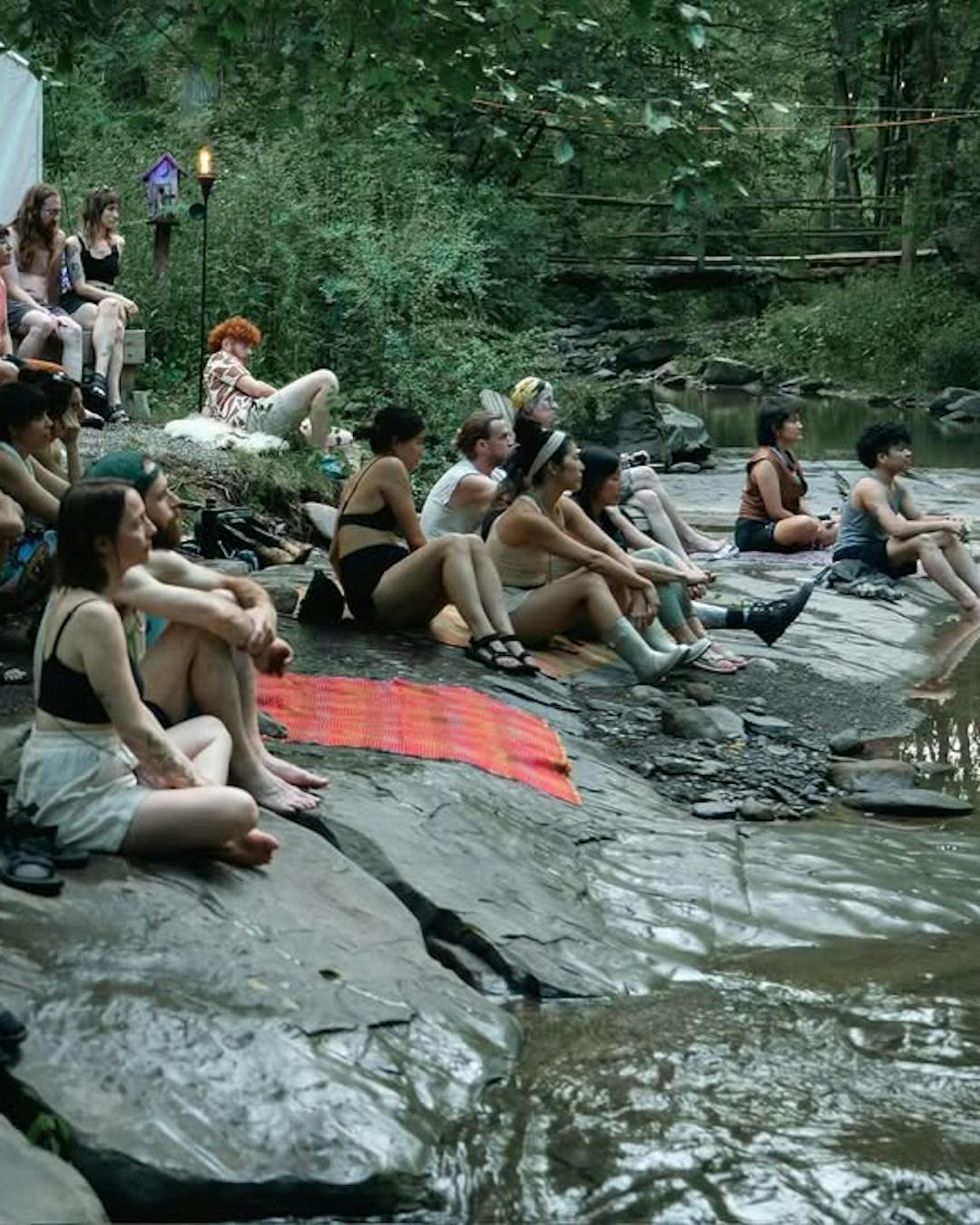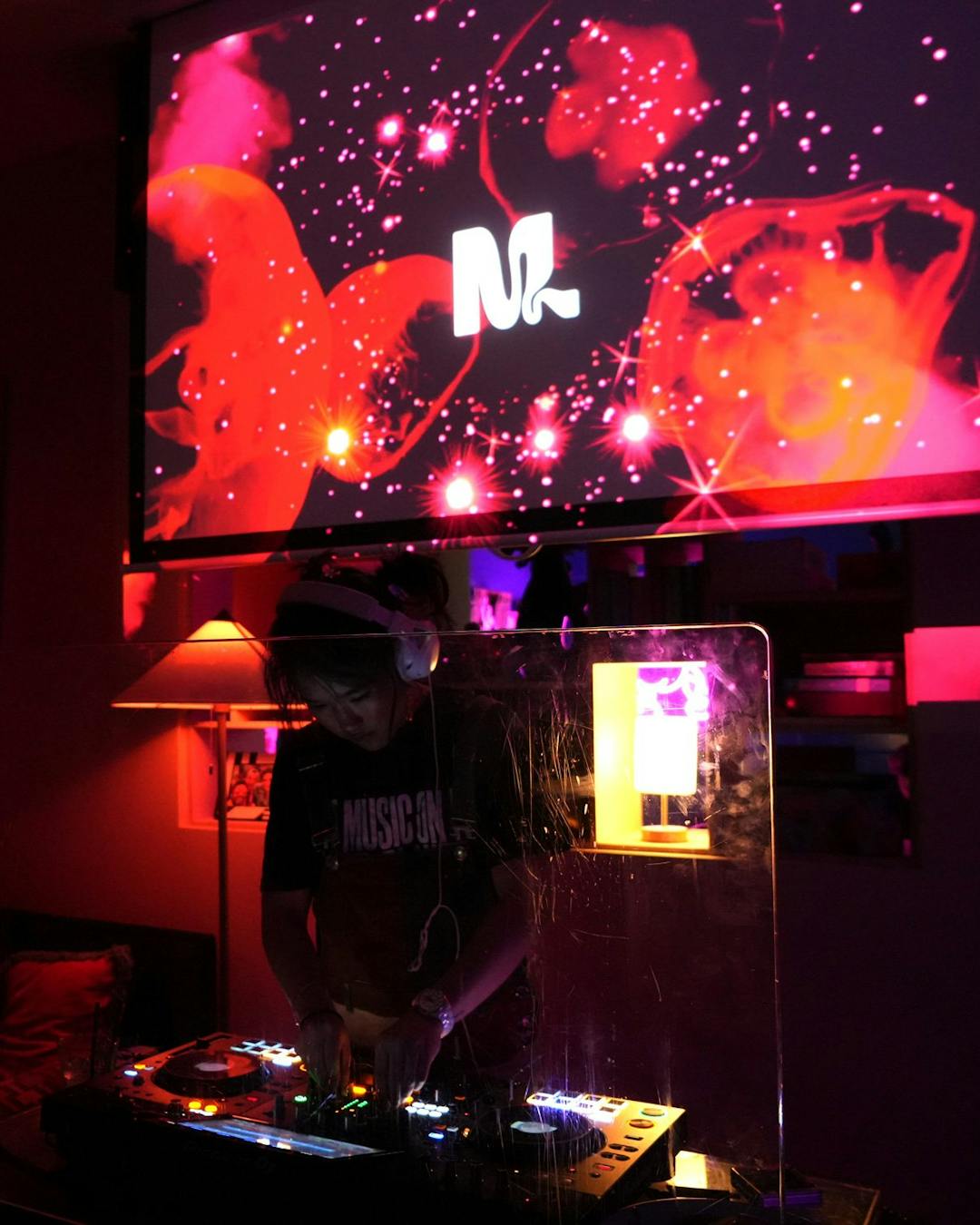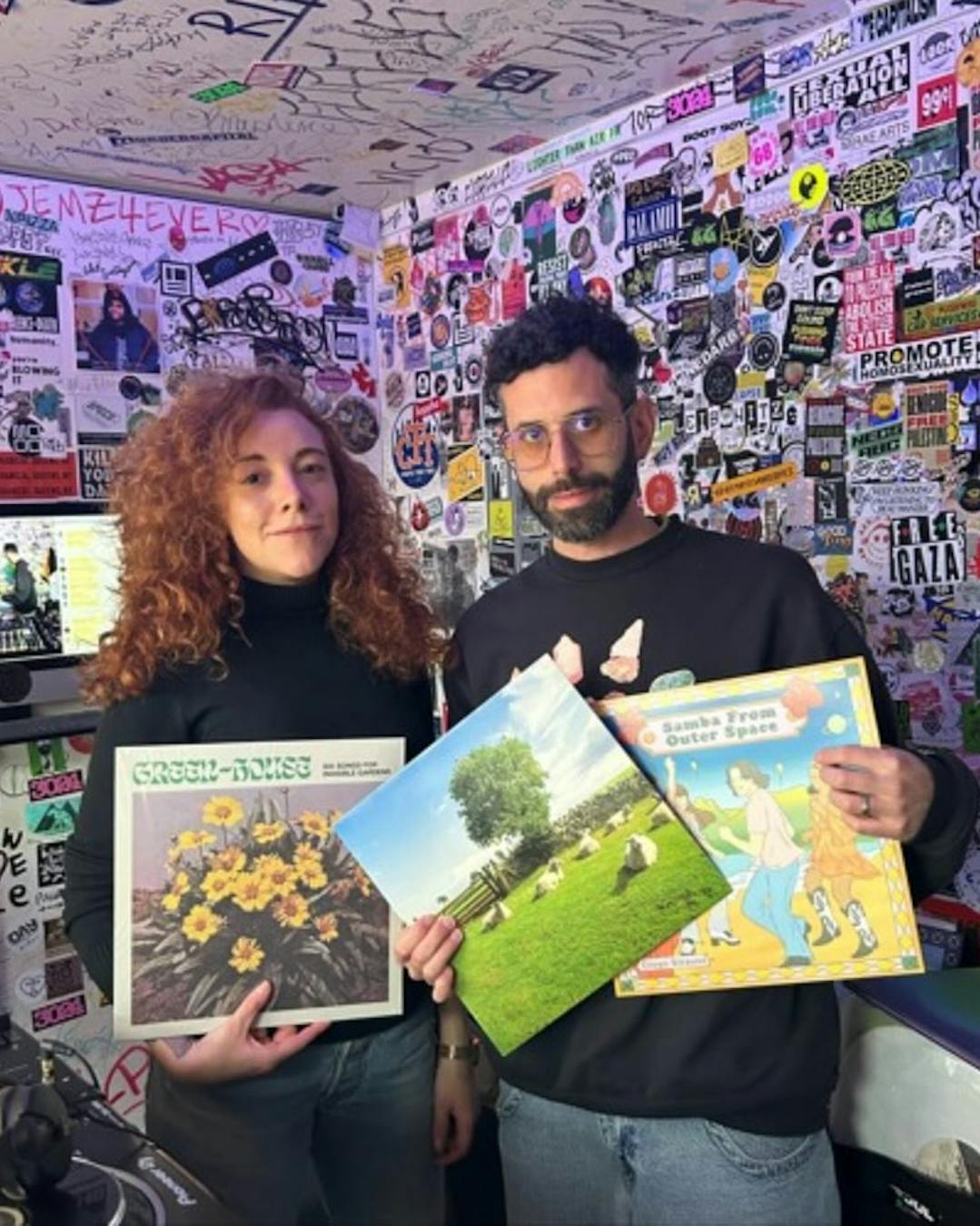AIAIAI x DJs for Climate Action: Earth Night 2025
Earth Night is a global movement launched by DJs for Climate Action (DJS4CA) that uses music to drive climate action and links communities to celebrate, raise awareness, and generate funds. This year’s series will take place from April 23-27 in cities around the world, and we’re proud to sponsor the Paris edition at Le Mezzette on 26 April. Together with Lola Villa of DJS4CA, we invite music makers, nature lovers, and enthusiasts to explore the connection between sound, nature, and environmental consciousness. Ahead of the event, we caught up with Lola Villa to discuss how music can inspire a more climate-conscious future, this year’s Earth Night, and what the future holds for sustainable creativity.
For those unfamiliar with DJS4CA's mission, can you explain how you think electronic music culture can drive any real environmental change?
Electronic music has deep roots in counter-culture movements. Marginalized communities, particularly in Detroit (techno) and Chicago (house), pioneered these genres as forms of resistance. The warehouse—birthplace of house music—offered liberation through alternative musical language and physical expression, directly challenging society's racist, white supremacist, and capitalist cultural norms. Dance music has always been a fugitive, utopian art form; its anti-establishment roots offer glimpses into alternative futures.
Electronic music has also consistently been at the epicenter of cultural change. Innovation and forward-thinking flourish at society's edges—exactly where electronic music originated and used to thrive. It's natural, then, that this culture provides fertile ground for queer expression and environmental consciousness, creating spaces where alternative futures can take root and grow.
What do you feel are the biggest barriers to sustainability in the nightlife and music industry?
I think the biggest barrier is fear—fear of taking risks to do things differently, fear of public shaming, and fear of the unknown. We hesitate to build our own rules and create new frameworks. The reality is that the industry is still attached to a pre-pandemic world, and we haven't been afforded the time and space to grieve what happened during COVID.
There's a crucial lack of interconnectedness. A club in LA can learn from a club in Cairo and vice versa, but these conversations aren't happening enough. Night mayors worldwide are making some progress, but the industry hasn't yet achieved true global interconnection.
Another significant barrier is a lack of humility. Currently, we respond to crises with more conflict—exchanging blame and operating from shame rather than recognizing that sometimes getting lost is necessary for finding our way forward. The nightlife and music industry needs to embrace humility by acknowledging our current state of disorientation. Within this admission of being lost, we may discover new pathways forward. It's okay to be lost—now, let's find alternative ways home.
In Deep Adaptation, Jem Bendell suggests that climate change is unavoidable, so rather than trying to prevent it (or ignore it), we should be looking at how to adapt to current times. Dance music has to look at itself through the same lens of adaptation, which comes with a certain level of grief, of mourning what once was, could be, or could have been. It's dark, but in that darkness there's a liberating crack from which we can all emerge in more queer, open-ended, forever-becoming ways so that we can build with the shared values that make up the DNA of dance culture: physical gatherings, communal living, queerness, and weirdness.

Sustainability in design and production is a core value at AIAIAI, which is why we were eager to partner with you for this year’s Earth Night. Why do you think it’s important for brands to align with your climate-conscious initiatives and integrate sustainability into their practices?
I think it's a matter of walking the walk. I love when brands don't simply brag about how green their products are but actually do the work—letting their actions speak for them. The way materials are sourced, how gear can be rebuilt rather than discarded after a few years, how brands build community around their products, and their transparency regarding production is incredibly inspiring.
Integrating regenerative practices, longevity, craftsmanship, storytelling, attention to detail, and love for materials should be at the center of the value chain. If you look at it this way, you are not only improving your brand’s marketing position but also creating a profound legacy in terms of environmental footprint. People vote with their wallets, and how things are made, by whom, for whom, and through which processes forms a major part of consumers' decision-making when purchasing gear.
What does it mean to you for a brand like AIAIAI to actively support climate-positive events and movements in the music space?
It means that top-quality sound, incredible materials, and product longevity CAN coexist with climate-positive initiatives. There's actually space for both. That's the beauty.
Do you believe you can achieve your mission without changes in brand practices—especially from companies producing the gear you use?
I think it will take everyone, at every level, working in their own way, to reach a point where things aren't disposable—where items are made to last, perform well, and grow with you.
What conversations do you hope to spark around sustainable music gear during events like Earth Night, and how can brands contribute to that dialogue?
The idea that artists, promoters, brands, and venues can all engage in conversation without fear of being canceled, attacked, or blamed. I call it "calling someone forward" instead of "calling someone out." Can we start having conversations around queer practices that lead us toward alternative futures—fugitive futures? What does the gear of the future look, sound, and feel like, and how can we get there? Conversations imagining these futures would be very welcome during Earth Night.

What do you think can be done to build stronger connections between brands like AIAIAI and the global music community to drive environmental change?
Come to the club, be at the center of the action, dance with the crowd, get in the studio with artists from different corners of life, different genres, different backgrounds and identities. Ask what they need and are looking for. Be part of larger organizations like ADE Green or Bye Bye Plastic.
There is not one easy or simple answer to the issues at hand, but for DJs, producers, venues, and brands looking to make meaningful changes, what are some practical first steps you feel they can take to reduce their environmental impact?
For DJs: Get a green rider. Ask for no single-use plastics during your gig. Try to get more gigs in the same region, country. Can you get to the uncomfortable task of asking if the staff at the club are being paid fairly? Do people feel safe at the club?
Producers: Stop buying gear for a year. Just limit yourself. You'll make great records with a limited amount of equipment.
Venues: Ban single-use plastic, no plastic bottles. Give people free water.
Brands: I know you want to keep selling and make a profit, though, build community around your gear, develop courses, seminars, in-person events to make your brand stand out.
On the other side, how can music fans become more engaged in climate activism, outside of events like Earth Night?
As clubbers we have the ability to vote with our wallets. We can influence the economy of club culture by being more intentional and disciplined with our money. Where we go, who we support makes a difference.
Support artists and initiatives that are at the intersection of art and nature, art and queerness, music and deep ecology. Listen to Future Sound of Nature, our label with Eli from Soul Clap, also part of DJs for Climate Action. Our label has a structure whereby nature is represented throughout each executive branch and decision making (with someone representing nature in cycles). Also, every music release will have 20% of the proceeds directly sent to an ecosystem or species represented in the record.

For Earth Day 2025, you'll present your Enchanted Land: Amazonía EP through a forest bathing sound journey designed to bring listeners into a parasympathetic state—one of deep relaxation—while transporting them to ecosystems around the world and fostering a more meaningful connection with the earth. This is quite a spiritual mission. What emotions and physical sensations do you hope participants will experience? And how do these feelings actively contribute to DJS4CA’s cause?
My work is deeply spiritual, yes! I also feel that climate work is spiritual work. It's through emotion that we'll remember what our minds have forgotten – that we're all interconnected. Nature isn't some distant place you visit occasionally; it's entangled with our cables, synths, mics, and soundscapes.
I hope people will feel that sense of awe – that profound wonder at the vastness and complexity of the natural world. And belonging – feeling you're in your rightful place, connected to everything around you. That recognition of interconnectedness – realizing you're not separate from but intimately linked with all existence.
These feelings often go beyond words, blending together rather than existing as separate emotions. Maybe that's why so many spiritual and contemplative traditions across cultures have developed practices specifically to help us experience this connection.
Your work combines Shinrin-yoku (forest bathing) with sound design and shapes worlds through the interplay of silence and sound. How do you see this dichotomy shaping the connection between music and nature for listeners? Do you think one must feel or explore this deeper connection in order to actively contribute to environmental activism?
Nature is for me an incredible source of musical inspiration. The concepts of rhythms, of ebb and flow, of tension and release are intrinsic to Nature's being. Nature, magic and science are no different from one another, and neither is music: part mathematics, part sensibility, part emotion. In this way, music is a perfect entry point to our embodiment of that oneness with nature—that wholeness. Everything connecting us with something bigger than ourselves happens through vibration, through sound, through frequencies, so it's self-evident that music acts as the vehicle for this connection to emerge. I believe what activism is lacking is emotional connection. We're stuck in our brains and in linear, goal-oriented solution mindsets that prevent us from experiencing alternative routes. I feel that by embodying activism—through sound, ritual, somatics, and dance—we can achieve higher, more elevated states of being and therefore the openness to figure things out differently.
How do you see the role of high-quality, sustainable audio gear in enhancing the listener's experience of your forest bathing sound journey?
Once you've experienced a high-quality audio experience, I don't think you'll ever go back to anything below that. I remember going to Japan and listening to the most pristine speakers, made from hinoki—the wood used to build Buddhist temples. Not a single cable, just pure wood. I remember crying when I first heard that sound. I played "Blackbird" by The Beatles, and the birds seemed to pop out of the speaker, singing directly into my ear. From that point on, I knew I wanted to play through the highest quality sound systems and allow my audience to experience productions and soundscapes as if they were bathing in them. It's crucial for the overall experience.

Enchanted Land transforms endangered bird calls into synthetic instruments, blending them with the Manguaré drums—traditionally used by the Indigenous Bora people of the Amazon as a language to organize meetings and send alerts. Due to widespread deforestation and the destruction of the Amazon, this language—along with many other Indigenous sound-based traditions—is at risk of disappearing. How do you see your use of this instrument as a way to preserve and amplify these threatened traditions while furthering your own mission and the cause of DJS4CA?
Recording endangered sounds that we might never hear again is a profound way to bring awareness and draw attention to what's being lost right now. I'm not preaching anything or shaming anyone. I'm simply using sound to highlight that what we're listening to today might not be heard in the future except in recordings. How that affects your psyche is up to each individual. It's profound.
And then how do you navigate the balance between honoring indigenous traditions and bringing them into contemporary electronic music spaces?
First you listen. Listening is at the core of my work. From the notion of the enchanted land—the land has been singing to us, but are we truly listening? To the work with indigenous communities. Can we just sit and listen? There's nothing else to do but to listen to the elders, to their indigenous wisdom. You then learn that their teachings are even more contemporary than many of the concepts we maintain in the West. That their cosmology is at the forefront of technological advancements. That's when you can combine the two worlds and see them as equal.
A portion of the EP’s profits supports the Bora people. How do you think other music projects can foster direct and meaningful support for indigenous communities?
Elevating the voices of indigenous leaders is essential. Music serves as a powerful medium to transmit messages, introduce unfamiliar languages, and foster the exchange of ideas. This ranges from direct collaborations with indigenous leaders and communities to ensuring they receive direct support from the musical creations inspired by their culture and wisdom.
What does the future of climate-conscious music events look like? Are there new initiatives or collaborations we should keep an eye on?
I'd like to share again about our work with Eli on Future Sound of Nature, a multimedia label that truly embodies Nature in her entirety. We've positioned Nature as an actual stakeholder in our business with influence over executive decisions. The question "What would Nature do?" guides our operations, acknowledging that Nature represents a constantly evolving, interconnected movement—and we're here to flow with her rhythms. We strive to adapt to change and ensure we're not placing ourselves at the center, but rather prioritizing the ecosystems around us in both our business practices and music creation.

For those inspired by Earth Night, how can they get involved with DJS4CA and its mission beyond this event?
You can join our Whatsapp community and stay active there. You can organize earth night events all year long. The work doesn’t stop there and it shouldn’t it’s a commitment to how you show up in the world every day.
Because we know naysayers exist, we wanted to get into how you might handle their questions.
How can a music event really make a difference in the fight against climate change?
“Making a difference” is not a matter of “bigger, larger, faster, more efficient” that type of thinking is what’s keeping us from flourishing, from thinning beyond linearity and binaries. Music is a language from which new ideas can blossom.
Aren’t electronic music events actually part of the problem? Don’t they generate a lot of emissions and waste?
“Part of the problem” is part of the problem, if you ask me. We are all here entangled and pointing fingers isn’t getting is anywhere. Whatever the “problem” is, anyone and any actor can play a role.
Isn’t this just greenwashing? How is this event actually sustainable?
Only by asking DJs not to fly that weekend, we’re saving tons of 2oC. By ditching single use plastic in all our events we’re making sure that millions of plastic get saved. But engaging in conversation with venues, promoters and DJs we can at least start conversations around: regenerative practices, good working conditions, minimal waste (and improved waste management). Not sure what you mean by greenwashing.
Why focus on music when there are bigger issues at play?
Not sure it’s a matter of just looking at the “bigger issues.” Systems change in systems-form. Not by blaming the big fish.
If you'd like to get involved with DJS4CA or Earth Night and get more info on their ongoing work, head to their website.
Click the flyer below for more information and tickets to the Paris event.
Posted on Apr 2, 2025 in Sustainability

